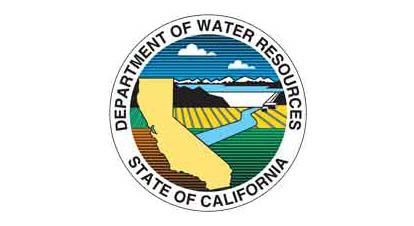
DWR announces results of third snow survey of 2010-2011
Department of Water Resources (DWR) hydrologists confirmed that water content in California’s mountain snowpack is well above average. Manual and electronic readings indicate that statewide, water content is 124 percent of normal for the date, and 109 percent of the April 1 seasonal average.
March 1, 2011

Department of Water Resources (DWR) hydrologists confirmed that water content in California’s mountain snowpack is well above average. Manual and electronic readings indicate that statewide, water content is 124 percent of normal for the date, and 109 percent of the April 1 seasonal average.
The readings were boosted by recent storms that made up for a dry January and early February.
“We appear to be on a good water supply track as we move toward summer’s peak demand period,” said DWR Director Mark Cowin. “Once again, however, we must emphasize that conservation should always be a priority in California.”
DWR estimates it will be able to deliver 60 percent of requested State Water Project (SWP) water this year. The estimate will be adjusted as hydrologic and regulatory conditions continue to develop.
In 2010, the SWP delivered 50 percent of a requested 4,172,126 acre-feet, up from a record-low initial projection of 5 percent due to lingering effects of the 2007-2009 drought. Deliveries were 60 percent of requests in 2007, 35 percent in 2008, and 40 percent in 2009.
The last 100 percent allocation – difficult to achieve even in wet years due to pumping restrictions to protect threatened and endangered fish – was in 2006.
The SWP delivers water to more than 25 million Californians and nearly a million acres of irrigated farmland.
The mountain snowpack provides approximately one-third of the water for California’s households, industry and farms as it slowly melts into streams and reservoirs.
Manual surveys are conducted up and down the state’s mountain ranges on or about the first of January, February, March, April and May. The manual surveys supplement and provide accuracy checks to real-time electronic readings from snow sensors as the snowpack builds, then melts in early spring and summer. April 1 is when snowpack water content normally is at its peak before the spring runoff.
Results of today’s manual readings by DWR off Highway 50 near Echo Summit are as follow:

Electronic readings indicate that water content in the northern mountains is 115 percent of normal for the date and 103 percent of the April 1 seasonal average.
Electronic readings for the central Sierra show 121 percent of normal for the date, 106 percent of the April 1 average. The numbers for the southern Sierra are 139 and 119.
On January 28, the date of this winter’s second manual survey, percentages of the snowpack’s normal April 1 water content were 65 percent for the northern Sierra, 75 percent for the central Sierra, and 97 percent in the south.
On this date last year, snowpack water content readings of the April 1 average were 112 percent in the north, 80 percent in the central ranges, 95 percent in the south, and 93 percent statewide.
California’s reservoirs are fed both by rain and snowpack runoff.
Most of the state’s major reservoirs are above normal storage levels for the date.
Lake Oroville in Butte County, the State Water Project’s principal reservoir, is 106 percent of average for the date (76 percent of capacity). Remaining winter and spring weather will determine whether it fills to its 3.5 million acre-foot capacity. Lake Shasta north of Redding, the federal Central Valley Project’s largest reservoir with a capacity of
4.5 million acre-feet, is at 112 percent of average (83 percent of capacity).
Statewide snowpack readings from electronic sensors are available on the Internet at
http://cdec.water.ca.gov/cgi-progs/snow/DLYSWEQ
Historic readings from snowpack sensors are posted at
http://cdec.water.ca.gov/cgi-progs/rpts1/DLYSWEQ
Electronic reservoir level readings may be found at
http://cdec.water.ca.gov/cdecapp/resapp/getResGraphsMain.action
You May Also Like



